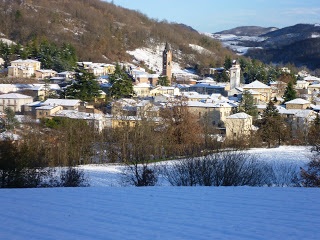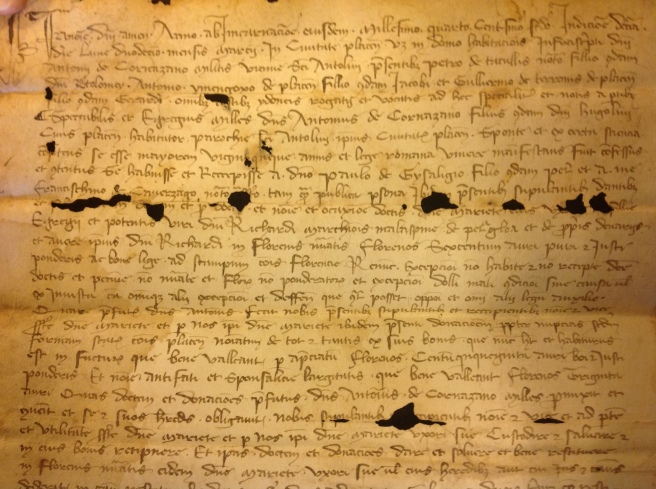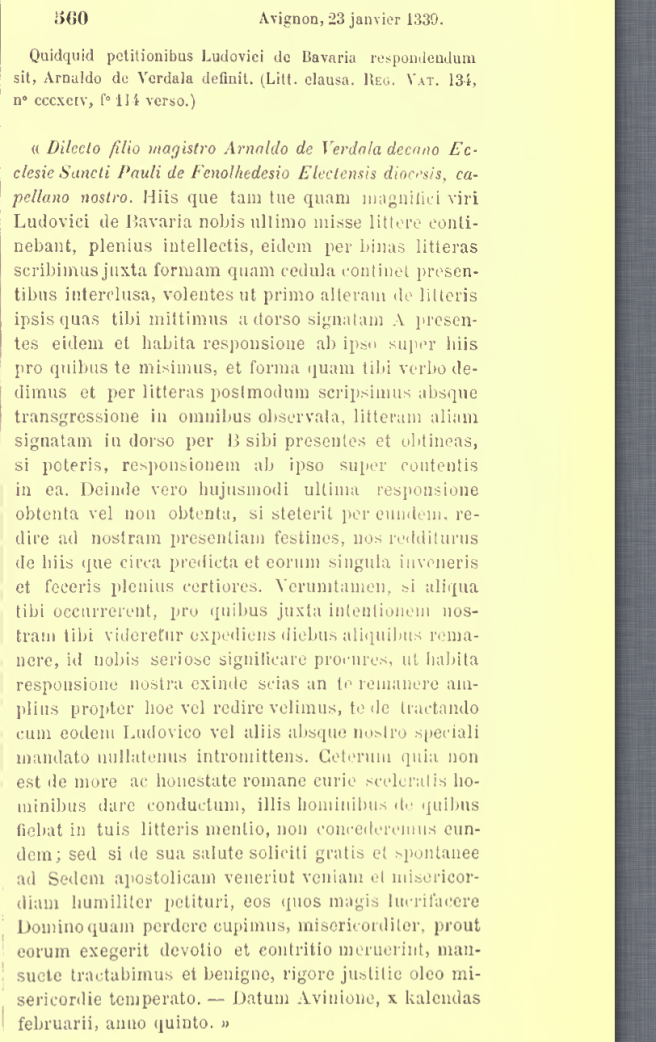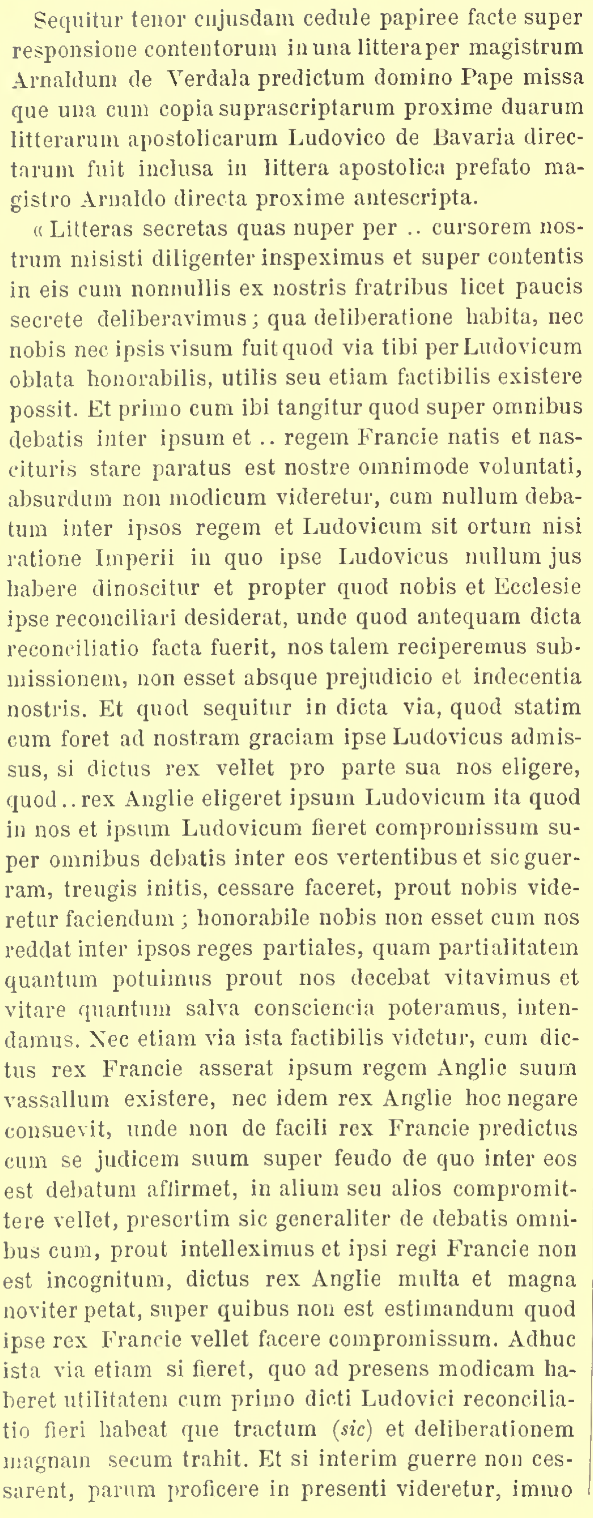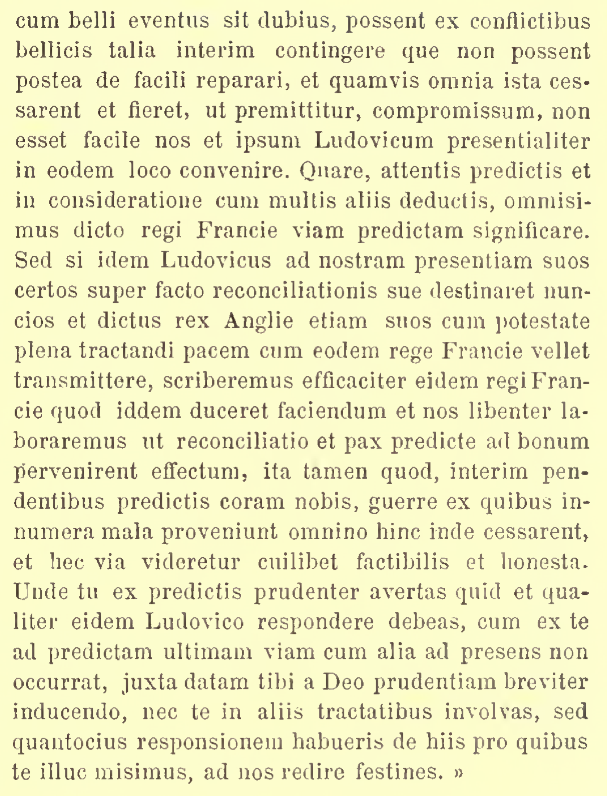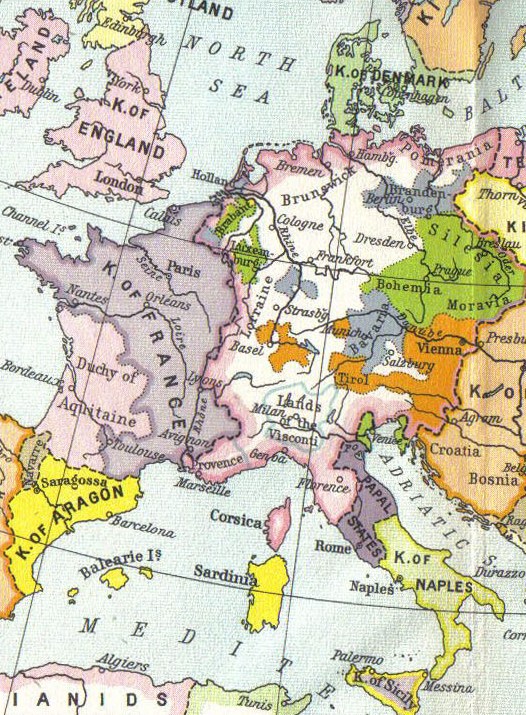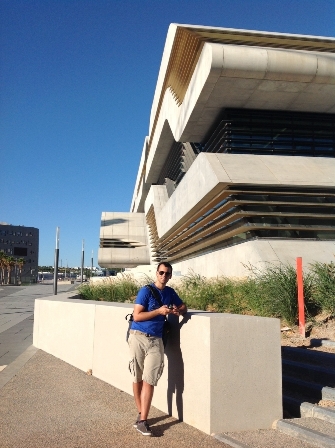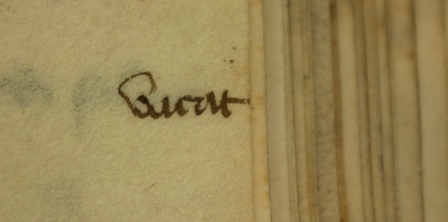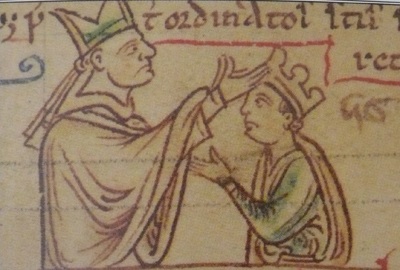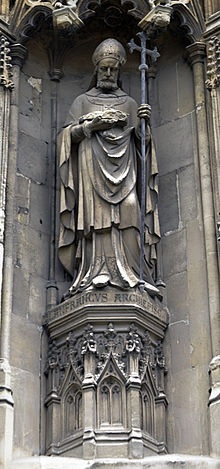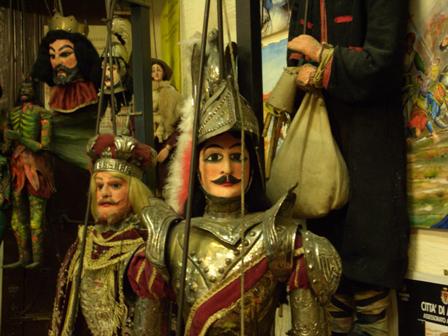With this post I’m going right back up the tree to Elizabeth Plantagenet (7 August 1282 – 5 May 1316). She was the youngest daughter of Edward I and Eleanor of Castile, and two years older than her brother, Edward II. For a short careful and detailed biography by Kathryn Warner, click here. For the Auramala project, what we want to know is not the details of Elizabeth’s day to day life, but simply who her daughters were, and dates of when she lived. However, even that creates a story! Firstly, thanks to her royal status, we actually can date both her birth and death, unlike most women of her age. We have that rare gift to medieval historians, a source! A fragment of the roll of daily expenses in Queen Eleanor’s household shows that she was churched on Sunday, 6 September 1282 (P.R.O. E 101/684/62 m.1). Since we know queens were usually confined for thirty days following the birth of a daughter, Elizabeth’s birth may be dated c. 7 August 1282. 1 We also know the location of her birth, Rhuddlan Castle, in Wales, as the Chronicle of Bury St. Edmunds states: “1282. Alienora regina Anglie apud Rothelan filiam peperit quam uocauit Elizabeth.”2 (Eleanor, queen of England, gave birth to a daughter at Rhuddlan, whom she named Elizabeth.) Moving on to her children. Elizabeth first married in 1297 (aged fourteen) the twelve year old Jan I, Count of Holland. It was a short lived marriage, and they did not spend much time together, Elizabeth choosing (of her own will, yes, that’s right, important medieval women could make some decisions!) to remain in England rather than go to Holland with her husband. She did go there for a few months in 1299, but Jan, now fifteen years old, died there on 10th November 1299. No children were born of the marriage, and a combination of distance, youth, and Jan’s ill health make it unlikely that it was ever consummated. No Dutch relations of Edward II to be traced from this line then, but fortunately, Elizabeth’s story doesn’t end here. Our seventeen year old widowed princess returned to England, and she would have known that she would be marrying again, probably fairly soon. Women of high status families, particularly when at a fertile age, were incredibly useful and powerful in politics, cementing alliances. This time she married an Englishman, Humphry de Bohun, 4th Earl of Hereford, 3rd of Essex, and Constable of England, at Westminister Abbey on 14 November 1302. The fruits of this marriage are a goldmine for us. Eleven children in thirteen years! Including four daughters, who we will be looking into in future posts. Sadly, this state of almost constant pregnancy and childbirth must have taken its toll on Elizabeth’s health. On 5 May 1316 she went into labour, giving birth to another daughter, Isabella. Both Elizabeth and her daughter Isabella died shortly after the birth, and were buried together in Waltham Abbey. A sad end to the story, but don’t worry, there’ll be another one. Enrica Biasi (The following information is courtesy of Craig L. Foster. Mr Foster is a research consultant at FamilySearch’s Family History Library in Salt Lake City, Utah (www.familysearch.org). FamilySearch collects digitized records and other information to assist people around the world searching after their ancestors. FamilySearch does not normally perform research on DNA and to search for living descendants.) Generation 2
- Elizabeth Plantagenet
Lady Elizabeth Plantagenet was born in August 1282 at Rhuddlan Castle, Rhuddlan, Denbighshire, Wales.2 She was the daughter of Edward I ‘Longshanks’, King of England and Eleanor de Castilla, Comtesse de Ponthieu. She married, firstly, Jean I Graaf van Hollant en Zeeland, son of Florent V Graaf van Hollant and Beatrix de Flandre, on 18 January 1297 at Ipswich Priory Church, Ipswich, Suffolk, England.2 She married, secondly, Humphrey de Bohun, 4th Earl of Hereford, son of Humphrey de Bohun, 3rd Earl of Hereford and Maud de Fiennes, on 14 November 1302 at Westminster Abbey, Westminster, London, England.1 She died on 5 May 1316 at age 33 at Quendon, Essex, England, childbirth.3 She was buried at Walden Abbey, Essex, England.3 From 14 November 1302, her married name became de Bohun. Children of Lady Elizabeth Plantagenet and Humphrey de Bohun, 4th Earl of Hereford
- Edmund de Bohun1
- Margaret de Bohun+1 d. 16 Dec 1391
- Hugh de Bohun1 b. c 1303, d. 1305
- Eleanor de Bohun+1 b. 1304, d. 1363
- Mary de Bohun1 b. 1305, d. 1305
- John de Bohun, 5th Earl of Hereford1 b. 23 Nov 1306, d. 20 Jan 1336
- Humphrey de Bohun, 6th Earl of Hereford1 b. 1309, d. 1361
- William de Bohun, 1st Earl of Northampton+ b. c 1311, d. 16 Sep 1360
- Edward de Bohun1 b. c 1311, d. 1334
- Eneas de Bohun1 b. c 1314, d. b 1343 – Died without issue.
- Isabella de Bohun3 b. 1316, d. 1316
Citations
- [S11] Alison Weir, Britain’s Royal Families: The Complete Genealogy (London, U.K.: The Bodley Head, 1999), page 84. Hereinafter cited as Britain’s Royal Families.
- [S11] Alison Weir, Britain’s Royal Families, page 83.
[S11] Alison Weir, Britain’s Royal Families, page 85. 1 John Carmi Parsons, “The Year of Eleanor of Castile’s Birth and Her Children by Edward I,” Mediaeval Studies, 46, 1984. 2 The Chronicle of Bury St Edmunds, 1212-1301, Antonia Gransden (ed.), Nelson Medieval Texts (London: 1964).
